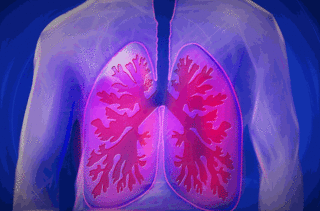Artificial Intelligence
AI Detects Tuberculosis from X-rays
AI deep learning system spots tuberculosis from chest radiographs.
Posted September 12, 2022 Reviewed by Kaja Perina

Artificial intelligence (AI) deep learning is a rising tool to assist clinicians in disease detection and diagnosis. A new study by researchers at Google Health have demonstrated how AI deep learning can spot pulmonary tuberculosis (TB) on chest radiographs as well as human radiologists.
The human brain and neuroscience have inspired concepts and methods used in artificial intelligence. The architecture of artificial intelligence deep learning is somewhat inspired by the human brain and biological cognition. The "deep" in deep learning refers to the many processing layers consisting of many nodes that are analogous to artificial neurons. As information passes through the layers, the weights of nodes are adjusted.
The deeper the artificial neural network, the more computational layers. This is sometimes referred to as the black box of AI. Machine learning is a subset of artificial intelligence, where computer systems are able to perform tasks without explicit hard-coding of instructions. Deep learning is a subset of machine learning with many processing layers between the input and output layer. Ironically, like the biological brain, the inner workings of exactly why deep networks work are largely unexplained, and there is no single unifying theory. Despite the black box of AI deep learning, the ability of computers to spot signals and patterns in complex data is a highly useful tool.
“In this study, we developed a deep learning system (DLS) to interpret chest radiographs for imaging features of active pulmonary TB,” the Google Health researchers wrote. “We tested our DLS using an aggregate of data sets from China, India, the United States, and Zambia that together reflect different regions, races, ethnicities, and local disease prevalence.”
Tuberculosis is a curable, preventable, and contagious infection caused by the bacteria Mycobacterium tuberculosis that typically infects the lungs. Symptoms of TB include chest pain, coughing up blood or phlegm, and a cough that lasts more than three weeks. TB can spread to other organs such as the kidney, spine, and brain.
In 2020, roughly 10 million people worldwide had tuberculosis, and 1.5 million died from TB according to the World Health Organization (WHO). An estimated 25 percent of the global population has been infected by the TB bacteria, but have not yet become ill with the disease, and infected people have a 5-10 percent lifetime chance of developing the disease according to the WHO. Ending tuberculosis by 2030 is one of the objectives of the United Nations Sustainable Development Goals. Having a cost-effective way to screen for TB can help underserved populations.
The Google Health researchers created an AI deep learning system with three modules, a lung cropping model, a detection module to spot areas of interest, and a classification module that uses output from the other modules in order to predict whether or not a chest radiograph (CXR) contains tuberculosis.
“Although there have been previous studies looking at artificial intelligence detection of TB in chest radiography, our study stands out in its inclusion and comprehensive subgroup evaluation of a diverse patient population to better understand the DLS performance,” the researchers wrote.
The deep learning system was developed and trained with de-identified chest radiographs from over 165,750 in more than 22,280 patients from India, China, Zambia, South Africa, Moldova, Azerbaijan, Georgia, Romania, and Belarus. Over 550,290 images were used for pretraining, and more than 130 images were used for training and validating the lung cropping module.
After training the deep learning algorithm, it was tested on over 1,230 images from the United States, China, India, and Zambia, more than 1,070 images from South Africa, for a total of over 2,300 images. The performance of the AI model was evaluated against the performance of human radiologists. The radiologists labeled over 2,300 images in the test data for whether or not there was tuberculosis in the image, along with their confidence and whether there were technical issues on the image.
The AI model had a high sensitivity of 89-100 percent in detecting all tuberculosis-associated abnormalities. The Google deep learning algorithm performed with higher sensitivity at 88 percent, and specificity compared to the human radiologists based in India that performed at a mean sensitivity of 75 percent. Additionally, the mean specificity of 79 percent by the AI deep learning system was noninferior to the nine India-based human radiologists mean specificity of 84 percent according to the Google researchers.
“Given the scarcity of experienced readers, the WHO now recommends computer-aided detection for both screening and triage in individuals aged 15 years or older,” wrote the researchers.
The researchers estimate that their AI deep learning solution can potentially achieve 40-80 percent cost savings when it comes to detecting tuberculosis and meets the WHO’s target of matching to either 90 percent sensitivity or 70 percent specificity.
“The DLS may be able to facilitate tuberculosis screening in areas with limited radiologist resources and merits further prospective clinical validation,” the radiologists concluded.
Copyright © 2022 Cami Rosso All rights reserved.




